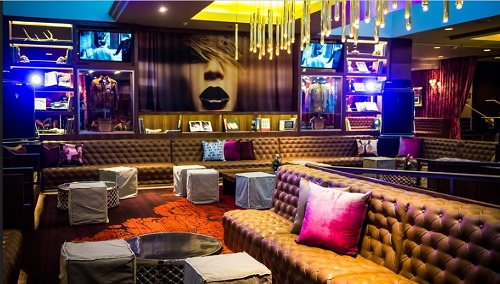
In a hotel, art is never just something to see. When used properly, artwork becomes an integral part of the guest experience, enhancing not just the design narrative, but the entire brand image.
Elizabeth Weiner runs a New York City gallery and has curated artwork for Four Seasons Hotels, Peninsula Hotels and—most recently—the new Shanhaitian Resort Sanya, the first Autograph Collection in the Chinese city. For a high-end hotel, she said, “the design and the artwork and the architecture need to be hand-in-glove. The three are seamlessly interwoven in a way that’s new and unique. The artwork is part of the design as opposed to a picture hanging on the wall.”
To achieve that integration, she said, designers, architects, lighting consultants and art curators need to connect early and often. “If not, [the art] looks like an add-on.”
Keeping it local
“Art is part of the unique, locally driven and thoughtfully curated experiences guests look for now when choosing or frequenting a hotel, as the guests feel more relaxed and connected to the hotel experience versus a typical overnight stay,” said Karl Oates, VP of lifestyle hotels for Tampa, Fla.-based McKibbon Hotels.
To achieve that, company founder John McKibbon works with art consultant Liz Barr to select custom pieces for each of the company’s 80+ hotels so that each property has work from approximately 12 local artists each.
When the hotel is in the design stage, the team gives Barr the details of its brand and the overall interior-design plan. She then gathers art and detailed biographical information on all the artists. “She may look at anywhere between 50 to 100 local artists before narrowing down that list to about 25 or so that are presented to John McKibbon for review,” Oates said. “From that group, John and Liz will choose around 15 that are picked for the hotel. In some cases, the artwork is set up in a gallery setting to allow for John to view all at the same time. The art chosen is, of course, done so carefully to connect the hotel to local community, be current and enhance the design features of the hotel.”
Like Weiner, McKibbon considers art to be a fundamental element to the design process. “Having unique and intriguing local art with a story adds to a memorable guest experience in the hotel, which is essentially what lifestyle hotels strive for, but can be equally applied to traditional branded hotels, too,” Oates said. “The guest is drawn to the art whether they are art lovers or not, as each piece of art is connected to the hotels design and local story.”
For Hard Rock Hotels & Resorts, the company's project directors work with art vendors to help develop a concept for each hotel that reflects the surrounding area and local culture of the city. "When selecting the artwork, we assemble an internal storyline of the memorabilia and artists that we want to showcase at the property, a lot of the time even commissioning local artists to do work for us," Jay Pecotte, senior director of Hotel Development at Hard Rock International, said. The teams work together to "layer" local elements and Hard Rock's musical culture.
"Artwork is important for hotels because it’s what guests first notice when they set foot onto a property; it draws guests in and makes them feel welcome," Pecotte said. "I also believe artwork helps tell a story to guests, which in return, helps each brand create its own identity and maintain brand standards."
![[Intelligent Hotel Lock] YGS-9901B](https://zeimg.jiagle.com/media/2016/11/24/6037221479970596.jpg!180)









Service Hotline
Work Time:Mon-Fri 9:00-18:00
UTC+8

Sinoexpo Digital Platform
Copyright 2006-2024 Shanghai Sinoexpo Informa Markets International Exhibition Co., Ltd. All rights reserved
沪ICP备05034851号-77
 沪公网安备 31010402000543号
沪公网安备 31010402000543号